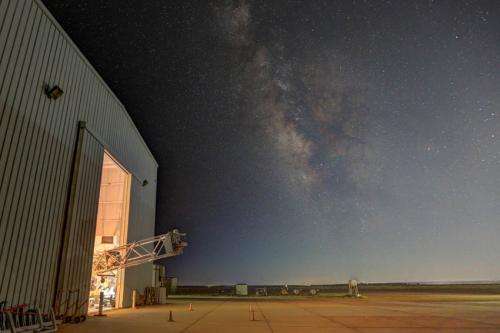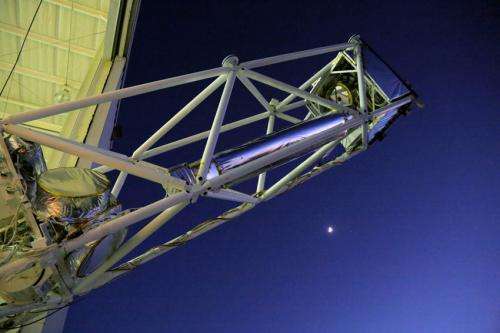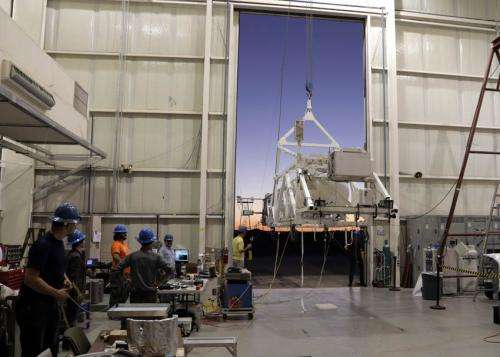X-Calibur mission is finishing its last flight-readiness checks in preparation for launch

One night this September, scientists working at the old municipal airport in the desert town of Fort Sumner, N.M., picked up the InFOCuS X-ray telescope with a crane, carried it to the open doors of a hanger and pointed it at the starry sky overhead.
They were testing the system the telescope uses to find a target star and hold it in its sights so that the telescope and its onboard X-ray polarimeter X-Calibur could be declared flight-ready and queued for launch into the stratosphere.
There are roughly 100 thousand million stars in the Milky Way galaxy. How does InFOCuS find and point at one of them?
Every two seconds one of the three star cameras aboard the telescope takes an image of the sky, analyzes the image to find the stars in it, and compares the pattern of stars to those in its onboard star catalog. When it finds a match, it translates the center of the image it took into true celestial coordinates, and commands heavy brass reaction wheels and sliders to slew the telescope from those coordinates to those of its target star.
The star trackers work from a "seed" position provided by a magnetometer, a sun/moon sensor and three widely separated GPS units, which in turn listen to seven satellites. Together these systems provide coarse position information that narrows the search for the star trackers, which take over fine positioning once they have their bearings.
As the target object moves across the sky the telescope follows its motion with arc-second accuracy, typically to a few thousandths of a degree, or a spot more than 100 times smaller than the diameter of the moon. Ground-based telescopes can track with sub-arc-second accuracy, but then again they are not slowly spinning at an altitude of 120,000 feet, rocked by thin stratospheric winds.
Once it is declared flight-ready, InFOCuS will carry aloft a new detector sensitive to polarized X rays shed by exotic celestial bodies, such as the ultrafast outflows of mass-accreting black holes. If this trial flight is successful, the detector will fly in winter of 2016-2017 from Antarctica. Balloons taking advantage of slow stratospheric winds above the New Mexican desert can stay aloft only for one day, but those carried by the polar vortex over the frozen continent can remain at float altitude for a month or more.

Armchair observers can watch near-real-time video of the X-Calibur launch on the Columbia Scientific Balloon Facility's website. While the balloon is aloft, it will be tracked on a Google Earth map. Click early and often. The balloon is now second in line for launch.

Provided by Washington University in St. Louis




















